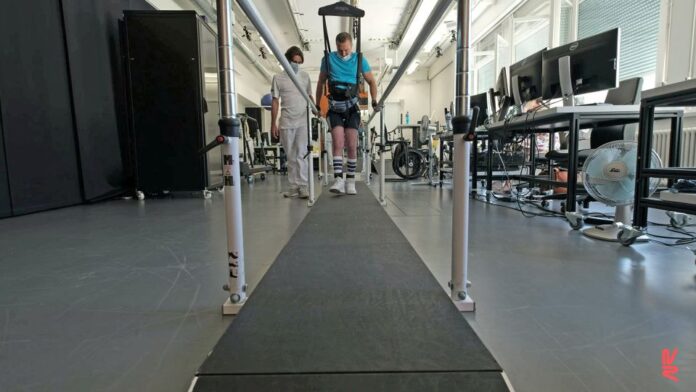Three patients whose lower bodies were left completely paralyzed after spinal cord injuries were able to walk, cycle and swim using a nerve-stimulation device controlled by a touchscreen tablet, researchers reported on Monday.
The patients’ injuries to a region called the thoracic spine – below the neck and above the lowest part of the back – were sustained one to nine years before receiving the treatment. Over the next six months, the patients regained the ability to engage in the more advanced activities – walking, cycling and swimming in community settings outside of the clinic – by controlling the nerve-stimulation devices themselves using a touchscreen tablet, the researchers said.
If this study’s early results are confirmed in larger studies, people immobilized by spinal cord injuries may someday be able to open a smartphone or talk to a smartwatch, select an activity such as “walk” or “sit,” then send a message to an implanted device that will stimulate their nerves and muscles to make the appropriate movements happen, the researchers said.
Courtine and Bloch and their team redesigned the devices so that electrical signals would enter the spine from the sides instead of from the back. This approach allows very specific targeting and activation of spinal cord regions, Courtine said.
The researchers noted that while the patients regained the ability to perform various activities, including controlling their truck muscles, for “extensive periods,” they did not regain natural movements.
Still, Bloch said, “The more they train, the more they start lifting their muscles, the more fluid it becomes.”
Analysis
A device is in the works that can be a potential home use for individuals that are paralyzed, due to spinal injuries from an accident, to be able to walk, cycle, and swim. This device meshes together artificial intelligence and brain waves to simulate muscles which allow the movements to be carried out. This shows that paralysis is not the end and is something that can be improved on through consistent work and practice. Bloch says that “The more they train, the more they start lifting their muscles, the more fluid it becomes.”
I believe this article gives hope to those that may be feeling despair from waking up and not being how they were a few hours ago. Although it is not a perfect solution as of now, but with a lot of consistent work and persistence, they can gain a part of what they used to be able to do again.




